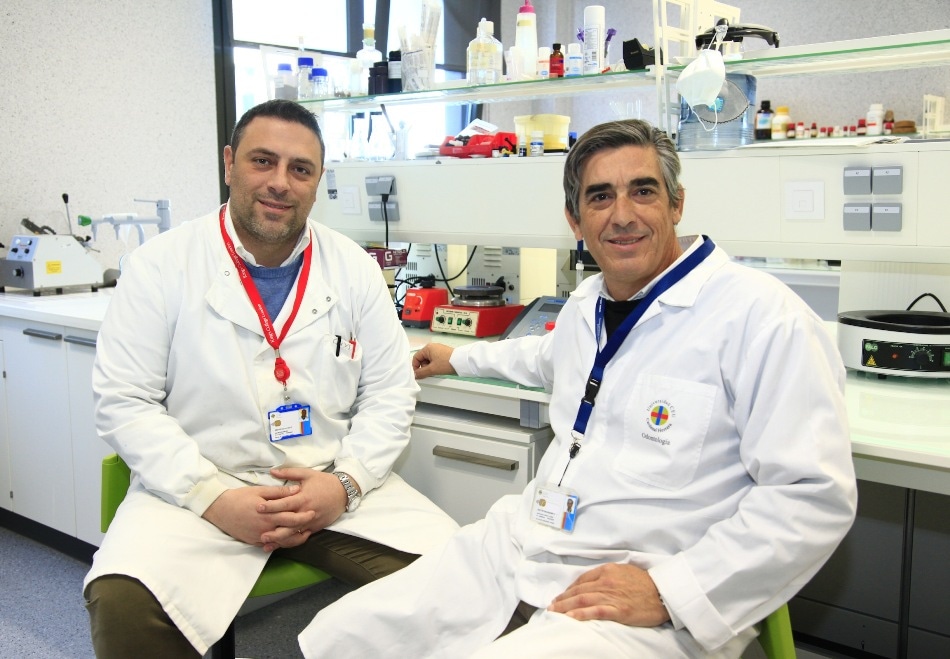Jan 22 2018
The white stains that orthodontic brackets frequently leave on teeth is due to enamel demineralization brought about by bacterial proliferation in the adhesive area; especially when accompanied by inadequate oral hygiene.
Researchers at the Odontology Department of Valencia’s Universidad CEU Cardenal Herrera in association with the King’s College London Dental Institute and the Universidade Federaldo Rio Grande do Sul (Brazil) have succeeded in comparing the effectiveness of three new types of experimental adhesives, with bactericidal and enamel remineralization properties which could help in preventing the appearance of these white stains around the brackets.
 Researchers Salvatore Sauro and Santiago Arias Luxan (Image credit: Asociación RUVID)
Researchers Salvatore Sauro and Santiago Arias Luxan (Image credit: Asociación RUVID)
The research carried out by CEU UCH Odontology teachers Salvatore Sauro and Santiago Arias in association with the Universidade Federal do Rio Grande do Sul and the King’s College London Dental Institute, where Salvatore Sauro is an honorary professor, has been featured in the Journal of Dentistry scientific magazine, one of the most prestigious in the field on a global level.
Bactericidal and remineralization properties
The study compares three experimental dental adhesives which comprise of a bioactive nano-mineral, known as halloysite, and nanotubes containing triclosan - a powerful fungicidal and antibacterial agent in varied concentrations: 5, 10 and 20%. The research compares the three new, experimental biomaterials’ polymerization properties, their bioactive properties and antibacterial strength, which prevent demineralization of the teeth and also encourage remineralization.
The three experimental materials tested in the laboratory have established the potential to stop bacterial proliferation in the 24 hours following their use, however only the one with the greatest concentration of triclosan, at 20%, has maintained this property after 72 hours. As far as the remineralizing effect, all three tested materials have been established to be effective two weeks following their use in dental enamel samples immersed in experimental saliva.
These results prove to be a promising step toward the development of new adhesives that have the potential to prevent the appearance of the bacteria that are responsible for demineralizing the enamel surrounding the brackets and, simultaneously, remineralizing the area, thus preventing the appearance of white stains on the teeth.
Research team
Professor Salvatore Sauro heads the Investigation Groups of the CEU-UCH in solid dental tissue engineering in situ and minimally invasive adhesive therapeutic rehabilitation. He has carried out sufficient research on the development of new biomaterials along with therapeutic properties and also to help in dental remineralization. CEU UCH Odontology Department professor Santiago Arias Luxan is the main researcher of the university’s Orthodontics and Dentofacial Orthopedics Group, where he teaches Orthodontics III and IV, an area in which he also dedicates much of his professional practice work, besides managing the Master’s Degree on this subject.
Additional information on the “Polymerization, antibacterial and bioactivity properties of experimental orthodontic adhesives containing triclosan-loaded halloysite nanotubes” article, featured in the Journal of Dentistry, can be obtained from ScienceDirect and PubMed.